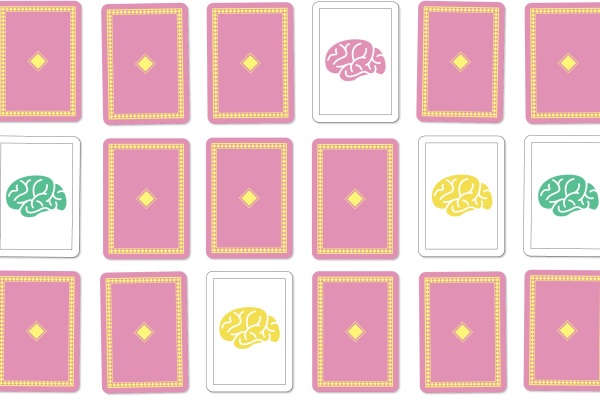There has been much debate in recent years about the relative value of counselling, CBT and other therapeutic modalities offered within IAPT. Counsellors who have doggedly been trying to maintain their foothold within IAPT have recently received great encouragement from the publication of a research paper,1 which concludes that there is no significant difference in outcomes between counselling and CBT, and that counselling can often achieve comparable outcomes to CBT in fewer sessions. The paper appears to confirm what many of us have long suspected, that despite conflicting loyalties and even turf wars, the mainstream theoretical approaches that we use are equally effective, whether variations of CBT or of counselling.
Back in 2009, however, when the NICE guidelines for depression were developed,2 policy makers were still focusing on evidence from randomised controlled trials in assessing the effectiveness of different psychotherapeutic models. Due to a perceived lack of such evidence for counselling, it was relegated to the position of a second-line intervention in the guidelines. Counselling approaches offered within the NHS are now expected to be evidence based, and this has required the creation of new models. Counselling for depression (CfD) is the name given within IAPT to person-centred experiential therapy (PCET), a model in the humanistic tradition. It is one of the four non-CBT therapy modalities approved for use in IAPT; the others are dynamic interpersonal therapy (DIT), interpersonal therapy (IPT) and couples therapy for depression (CTfD). Like the other three modalities, CfD has been adapted from well-established and respected models of therapy, to meet the demands of IAPT, specifically the needs to be evidence based, to offer brief therapy in six to 20 sessions, and to allow the current workforce of qualified and experienced therapists to train quickly and cheaply.
BACP was commissioned to develop CfD for use in IAPT in 2009, and welcomed the opportunity to secure a place in the NHS for a humanistic/person-centred model of counselling. A group of experts worked together to set out this version of PCET, integrating aspects of emotion-focused therapy (EFT), which has a strong research base and provides evidence of effectiveness,3 with person-centred therapy (PCT), in which, according to a BACP survey, 72 per cent of therapists nationally are trained.4 A training curriculum for CfD was developed, based on the Competence Framework,5 and is currently offered in around six university centres. It entails five days of training, 80 hours of supervised practice, and the assessment of four recordings of sessions with real clients against the Person-Centred and Experiential Psychotherapy Scale (PCEPS).6 The Competence Framework for CfD was written by Andy Hill, based on the Humanistic Therapies Framework,7 under the auspices of University College London (UCL), which has created competence frameworks for a wide range of other modalities. The notion that CfD is a ‘manualised therapy’ might give a mistaken impression of the model as formulaic and rigid, when the ‘manual’ is actually the Competence Framework, which is descriptive, rather than prescriptive.
There is some confusion about how much CfD is currently offered within IAPT, possibly arising from the name itself. Pybis et al1 quote a 2015 report stating that only 5.7 per cent of the IAPT workforce is trained in CfD, while at the same time they also quote an up-to-date IAPT report which states that 23 per cent of patients are now receiving CfD. It seems likely to me that some counsellors describe what they deliver as ‘counselling for depression’ – which it is – even if they have not trained in the specific new model. This is one reason for using the more general description of the model as ‘person centred experiential’.
While 72 per cent of BACP practitioners might identify themselves as person centred, the person-centred tradition is a broad and evolving church.8 The shared values that underpin all the therapies rooted in this tradition, including CfD, are those described by Carl Rogers in the 1940s and 50s. According to Rogers, every organism has an ‘actualising tendency’, and therefore every person is striving to fulfil their potential, with self-determination, personal meaning and self- awareness.9 The person-centred view of psychological distress is that problems arise when the actualising tendency is blocked or distorted in some way. Robert Elliott, one of the founders of CfD, describes this as being ‘stuck’, and explains it to clients by saying, ‘Your depression is you sending a message to you that something’s broken in your life.’10 Rogers believed that the best context within which to achieve awareness of our own experience, especially emotional process, and to resolve blockages and distortions in the fl w of experience, is human relationship.9 The role of the therapist, therefore, is to create a relationship with the client that can facilitate this awareness and growth, by offering Rogers’ ‘core conditions’ for therapeutic change.4 These are very familiar as therapist genuineness, empathy, and unconditional positive regard. Another aspect of the therapeutic stance that fl ws from this is the knowledge that the client is the expert on their own experience and their own needs.
For Rogers, and therefore for counsellors who adhere to the most classical person-centred model, recognising and respecting the client’s expertise and self- determination means providing purely the therapeutic relationship, based on the core conditions, without offering any interpretations, guidance, interventions or therapeutic techniques. CfD, on the other hand, draws from many of the more recent adaptations within the person-centred ‘nation’, to offer ways to help the client become more aware of their emotional process and to resolve their ‘stuckness’.11 Being a brief model, usually offered in eight to 12 sessions, with a maximum of 20 sessions, it is important for the work to be collaborative, and for the client and counsellor to work together to formulate therapeutic goals. The counsellor also needs to meet the IAPT requirements of assessment, especially risk assessment, review and administering outcome measures. These activities, along with the core conditions, are described by Sanders and Hill in their textbook, Counselling for Depression, as the ‘therapeutic stance’.4
Still, in a CfD session, as in a traditional person-centred session, the emphasis is on ‘tracking’, or staying within the client’s frame of reference.6 The client brings their own narrative, and the counsellor actively listens, demonstrating their attention with reflections and paraphrases. In CfD, though, the counsellor tends to be consciously selective, reflecting and even amplifying the emotionally poignant aspects of the client’s narrative, to aid the client’s own awareness. Sometimes this might mean drawing attention to some pain that the client skips over, or avoids, but which the counsellor’s empathic attunement11 tells them is important. It might be just noticing the hurt, for instance saying, ‘It seemed to me there was just a hesitation there as you mentioned your brother. I wonder if it’s something that’s a bit hard to talk about?’ The client then is free to take up the offer of focusing on the emotion, or the avoidance, or to continue with the narrative as they were.
Emotion-focused therapy, from which the emotion theory and many of the interventions used in CfD are drawn, suggests that the therapist can recognise certain client emotional processes, called ‘task markers’, and propose tailored ways of working with these, called ‘tasks’.11 CfD is less prescriptive or directive than this, but the CfD therapist can offer some process-guiding interventions to help the client. Sanders and Hill refer to these as ‘auxiliary techniques’,4 but many CfD practitioners come to regard them as integral to their practice. These process-guiding interventions are aimed at helping the client to access and symbolise emotions, regulate emotion, find meaning in their emotional experiences, and, by these means, to become aware of their emotional needs, in order to transform unhelpful emotions to helpful emotions.11
In order to achieve this, it is important to bring the client’s emotions into the counselling room, to help the client re-experience the original emotion as closely as possible. An element of CfD that runs throughout the work to enhance the poignancy and immediacy of emotion is ‘experiential specificity’.11 This means that the counsellor helps the client to fill in as much detail about each experience as possible, whether it’s a memory, an image or metaphor, or an embodied feeling. For example, if a client is recalling a particular interaction with another person, the counsellor could ask them to imagine them there in the room, and to make them as real as possible by describing what they might be wearing, how they would be sitting, or the expression on their face, and even asking if the client can recall their odour. The case illustrations that follow demonstrate that using the imagination like this can be very powerful for the client, and the counsellor needs
to use their skills of psychological holding, making sure the client feels safe, and that any intervention is offered tentatively within an established and trusting relationship.
EFT theorists define a complete emotion as comprising five elements, all working together as a ‘scheme’.11 The elements are: the emotion itself (either expressed or implied); the triggering event, either present, past (as with a memory), or future (as with an anxiety); the physical sensation accompanying the event; the thoughts, words or images accompanying the sensation; and the ‘action tendency’ – not what the person actually does, but rather the need that corresponds to the primary adaptive emotion, such as to fight, flee or freeze with fear, or to get close with love. For the CfD counsellor, this means that there is a variety of avenues to help the client access and deepen their emotion. For example, if the client talks about thoughts, the counsellor can gently enquire about how they feel in their body as they have that thought, or what it makes them want to do.
To expand on this idea of an embodied feeling, CfD practitioners can make use of the theory and practice of focusing-oriented therapy, another ‘tribe of the person- centred nation’, to help clients explore and find meaning in their ‘felt sense’.11 Not all clients are able to engage with the idea of their gut trying to tell them something, but some clients find it very helpful, and can creatively use images and metaphors that emerge as they look inside themselves.
A young man I worked with – let’s call him Tom – was talking about his memory of going to find his father, who had abandoned the family when Tom was very small. When Tom approached him, his father was very dismissive, and finally stood up to show him the door. Tom re-experienced his anger in our counselling room, and I asked him to describe it. He replied, ‘It’s like a hot ball in my stomach.’ I asked him how big and hard it was, and he closed his eyes to look inside himself. He said, ‘It’s like a sun, burning gas, and the heat radiates into my chest and arms.’ Seeing his fists clench, I reflected, ‘It looks as though the radiating heat makes you tense your muscles. Is there anything those muscles want to do?’ Tom expressed how he wished he could have punched his father, and in his imagination he followed through with the punch. Through focusing on his embodied feeling and imagination, (and without harming anyone in real life), Tom accessed the healthy emotion of protective anger, a step in the process of resolving his distressing feelings of being a helpless victim.
The CfD therapist, therefore, needs to be empathically attuned to the client’s emotional process, to not only track it, but to help the client to explore and deepen it by working with embodied feelings, images and metaphors. Empathic attunement is also important in listening out for different voices or parts within the client.10 This draws on the EFT theory of ‘conflict splits’, where different parts of the client are in conflict with each other. It also echoes the idea of configurations of self, described by Mearns and Thorne.12 Robert Elliott describes how the harsh voice of an inner critic can engender and also maintain depression.10 The person- centred values of being empathic and non-judgmental become crucial in working with configurations of self, because the counsellor needs to meet each part with equal empathy. It can be difficult for the counsellor to resist ‘rescuing’ the client from a cruel critical voice, but it is an important aspect of the therapy to encourage both parts, namely the critic and the part experiencing the criticism, to speak within the session. It might help to remember that the critic has evolved for a reason, because it has in some way been helpful to the client in the past. If the client has grown up with critical people in their lives, they might have found it less painful to be the first to criticise themselves. Or the critic could be motivating, or protective in some other way. The counsellor can encourage the critic to speak out loud as harshly and rudely as they do in the client’s head, so that the ‘experiencer’ suffers the ‘collapse’ that becomes so familiar in depression. This helps the client become aware of the processes at work inside them and gives the experiencer a space to protest or defend themselves.
This can be illustrated through another short case study. A young father was very anxious and self-critical, afraid of new situations and people, and expecting people not to like him. He was depressed that these feelings kept him very restricted, and not able to live the life that he wanted for himself and his children. Through our exploration together of his feelings, we identified the fearful part of him, which wanted to stay safe in his ‘cave’. At the same time there was another part of him that felt frustrated and trapped in the cave, and wanted to be ‘out there’ living life. By talking from the frightened part, the frustrated part of him could begin to understand the depth of and some of the reasons for his fear. With this greater understanding, the frustrated part of him eventually softened to feel compassion, and became able to provide gentle encouragement to take the risk every now and again of coming out of the cave, and allow himself more positive experiences of life.
Another intervention used commonly in CfD is working with unfinished business, that is, working on unresolved pain from past or present relationships. As with working with parts of self, this involves bringing the different voices alive in the session, in this case encouraging the client to say what’s in their heart, or ‘speak their truth’ to the other person, and maybe trying to imagine how the other person would respond. Again, the emphasis is on the emotions that the intervention
elicits in the client, and what these emotions communicate about the client’s unmet needs.
Another young woman I worked with felt unbearable guilt for having had an abortion. Like many women in her situation, she was painfully aware of the anniversary of the termination and the date when the baby would have been born. It hurt to watch the progress of other children who were born at that time. As part of our work, we talked about how and where she imagined her baby now. She pictured the baby as a boy, and he wanted her to know that he was OK. He didn’t want her to feel so sad and guilty. I asked her if there was anything she would say to him and as she said, ‘I’m sorry’, her tears poured out. She needed forgiveness, and she felt that her baby would forgive her.
In EFT, these two interventions – working with conflict splits and unfinished business – would be carried out with the client speaking to empty chairs, to make the emotions as vivid and immediate as possible. However, Robert Elliott quotes Pete Sanders describing CfD as ‘EFT without furniture’,10 and in CfD, these interventions are more likely to be played out using two hands to represent the different parts or different people. As we have said, in CfD such interventions are not seen as discrete ‘tasks’, but are worked seamlessly into the flow of the session.
For many counsellors trained in a person-centred model, CfD feels like a natural progression in their work; not so much learning new skills or expanding their repertoire, but honing and bringing a sharper focus to their practice. For others, it can feel like quite a bewildering array of new concepts, or even a quite different way of approaching work with a client. Personally, I know that my outcomes have improved since practising CfD, and I believe this is because I am more energised and creative in my therapeutic relationships, as well as challenged. It helps me to keep the client at the centre, tracking their narrative, and also providing a secure frame from which to understand their process, and fresh and personal ways to work with it.
Rinda Haake, MA, MSc, Reg MBACP(Snr Accred) is a counsellor and supervisorwith 20 years’ experience in the NHS. She completed training in counselling for depression, in Manchester in 2011, and subsequently undertook training to Level 2 in emotion-focused therapy at the University of Strathclyde. She supervises individuals and groups, both trainees and practitioners qualified in CfD, in IAPT services in Sheffield and South Yorkshire. Along with a colleague, she has delivered several CfD information and training sessions to co-workers.
More from Healthcare Counselling and Psychotherapy Journal

Dynamic interpersonal therapy: working with perceptions of the self and other
Open article: Deborah Abrahams outlines the contribution of short-term psychodynamic work to IAPT services. Healthcare Counselling and Psychotherapy Journal, July 2017

Couple therapy: the IAPT service for couples working with relational factors in a diagnosis of depression
Free article: Kate Thompson explores the lack of couple therapy on offer within IAPT and argues its expansion. Healthcare Counselling and Psychotherapy Journal, April 2017

Memories: fact or fiction
Open article: Neville Tomlinson considers the quirks of memory and forgetting, exploring the topics of how memories are formed and stored, repression, suppression and false memories. Healthcare Counselling and Psychotherapy Journal, January 2017
References
1 Pybis J, Saxon D, Hill A, Barkham M. The comparative effectiveness and efficiency of cognitive behaviour therapy of depression: evidence from the 2nd UK National Audit of psychological therapies. BMC Psychiatry 2017; 17: 215ICE.
2 Depression in adults: the treatment and management of depression in adults. NICE clinical guideline 90; 2009. [Online.] Available: https://www. nice.org.uk/guidance/CG90 (accessed 23 May 2017).
3 Elliott R, Watson J, Greenberg LS, Timulak L, Freire E. Research on humanistic-experiential psychotherapies. In: Lambert MJ(ed). Bergin & Garfield‘s handbook of psychotherapy and behavior change(6thedition). New York: Wiley; 2013 (pp495–538).
4 Sanders P, Hill A. Counselling for depression, a person-centred and experiential approach to practice. London: Sage; 2014.
5 University College, London. Counselling for Depression. [Online.] http:// www.ucl.ac.uk/pals/research/cehp/research-groups/core/competence- frameworks/Counselling_for_Depression (accessed 23 May 2017).
6 Freire E, Elliott R, Westwell G. Person-Centred and Experiential Psychotherapy Scale: development and reliability of an adherence/ competence measure for person-centred and experiential psychotherapies. Counselling and Psychotherapy Research: Linking Researchwith Practice 2014; 14(3): 220–226.
7 University College, London. Humanistic Therapy. [Online.] http://www. ucl.ac.uk/pals/research/cehp/research-groups/core/competence- frameworks/Humanistic_Therapy(accessed 6 July 2017).
8 Sanders P(ed). Tribes of the person-centred nation(2ndedition). Ross-on-Wye: PCCSBooks; 2012.
9 Rogers CR. Client-centred therapy. Boston: Houghton Mifflin; 1951.
10 The Counselling Channel. Counselling for depression. [Online.] 2016. https://www.youtube.com/watch?v=J9LuQV5yC2A (accessed
21 June 2017).
11 Elliott R, Watson JC, Goldman RN, Greenberg LS. Learning emotion-focused therapy. Washington DC: APA; 2004.
12 Mearns D, Thorne B. Person-centred therapy today: new frontiers in theory and practice. London: Sage; 2000.
